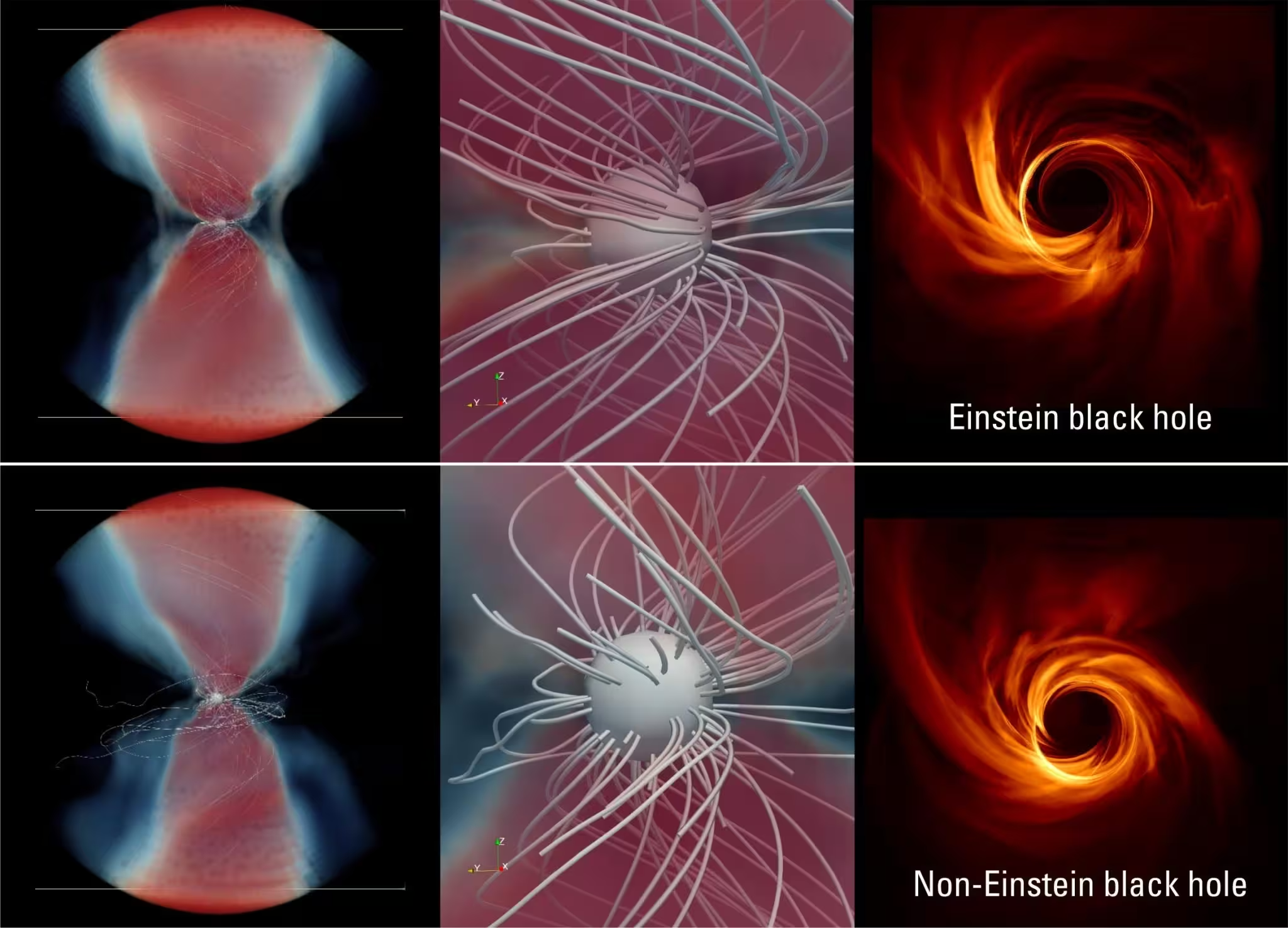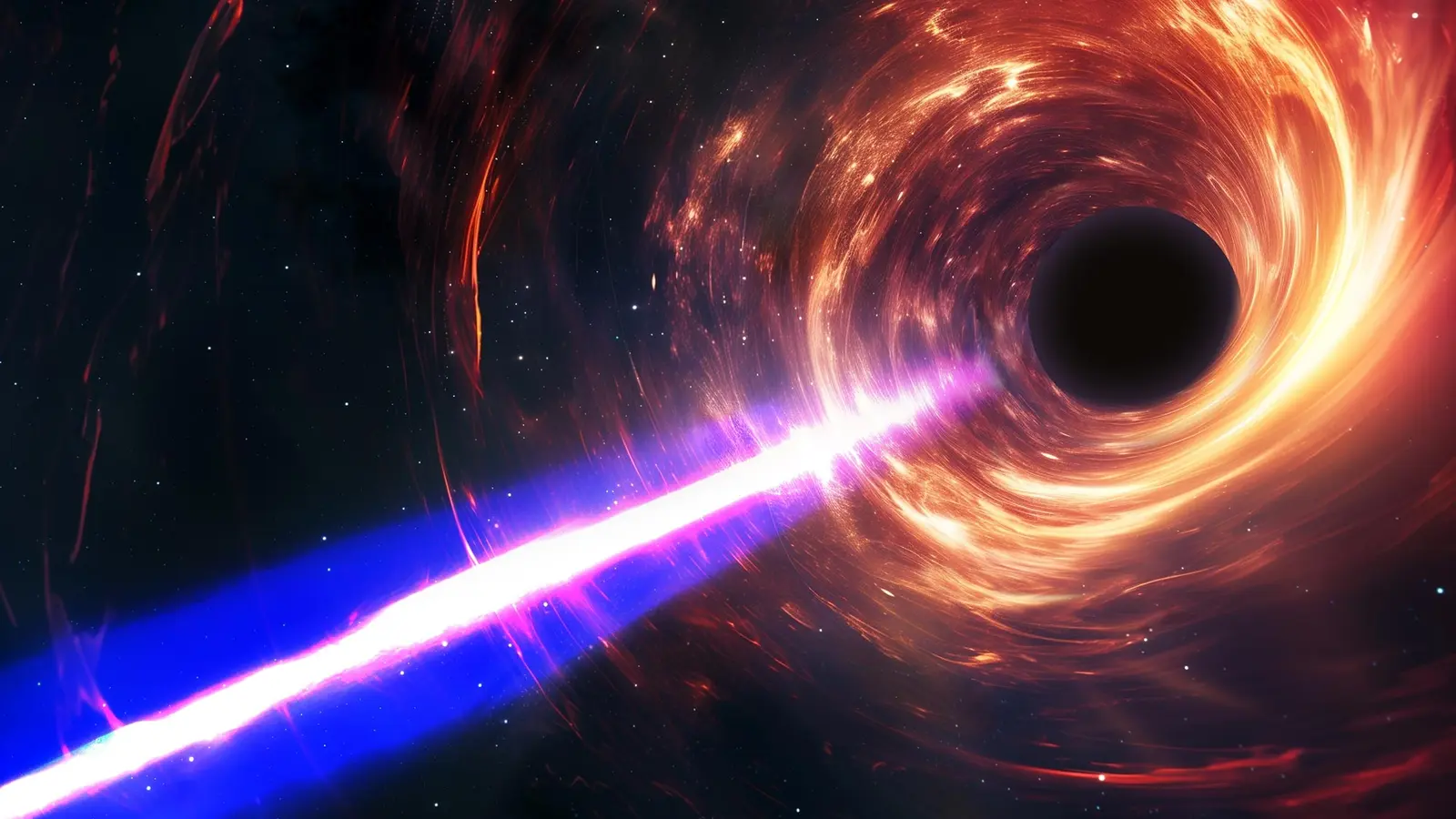7 Minutes
Black holes, once shrouded in theoretical mystery, are now being probed with images that capture their shadow and surrounding glow. Scientists are using these pictures to test whether Einstein’s general relativity still holds at the most extreme edges of gravity — and to hunt for subtle signatures that might point to new physics.
Why a black hole’s shadow matters
When the Event Horizon Telescope (EHT) released the first-ever image of a black hole in the center of galaxy M87 and later of Sagittarius A* at our Milky Way’s heart, it changed how astrophysicists could test gravity. Those images do not show the black hole itself — the singularity is cloaked — but they reveal the bright ring of hot plasma bending light around the event horizon. That dark silhouette, the black hole's shadow, is a direct consequence of spacetime curvature predicted by general relativity.
“What you see on these images is not the black hole itself, but rather the hot matter in its immediate vicinity,” says Prof. Luciano Rezzolla of Goethe University Frankfurt, one of the teams developing methods to compare theory and observation. “As long as the matter is still rotating outside the event horizon — before being inevitably pulled in — it can emit final signals of light that we can, in principle, detect.”
Because the shadow’s size and shape are dictated by how gravity bends light, different theories of gravity can produce subtly different shadows. If we can measure those differences precisely, we can use black holes as laboratories to either confirm Einstein’s theory or reveal deviations that point to new physics.
Simulating shadows: how scientists test competing theories
Testing gravity at black-hole scales requires two ingredients: high-fidelity observations and detailed theoretical models. Rezzolla and colleagues, in collaboration with researchers at the Tsung-Dao Lee Institute in Shanghai, have built a systematic framework to compare synthetic black hole images predicted by a variety of gravity models against expected telescope measurements.

At the current resolution of telescopes, black holes predicted by different theories of gravity still look very similar. Future telescopes will make the differences more visible, making it possible to distinguish Einstein’s black holes from others. Credit: Luciano Rezzolla/Goethe University
The team uses three-dimensional general-relativistic magnetohydrodynamic (GRMHD) simulations to model how plasma and magnetic fields behave in warped spacetime. These simulations produce synthetic radio images of the hot gas around a black hole — essentially what a future, more capable telescope might see. By varying the underlying gravitational theory in the simulation, they generate a library of predicted shadows and emission patterns.
“The central question was: How significantly do images of black holes differ across various theories?” says lead author Akhil Uniyal of the Tsung-Dao Lee Institute. Their work, published in Nature Astronomy, translates those differences into observable criteria: measurements of shadow radius, asymmetry in the bright ring, and subtle shifts in emission morphology can all indicate which models remain viable.
Which alternatives can be ruled out now?
- Current EHT images already disfavor some extreme scenarios such as naked singularities (objects without an event horizon) and certain wormhole models for M87 and Sagittarius A*, because those would produce shadows wildly inconsistent with observations.
- But with existing measurement uncertainties, only the most exotic or extreme departures from general relativity can be excluded so far.
In short: present-day resolution leaves many alternatives viable. The promise comes with the next leap in imaging sharpness.
Sharper telescopes, decisive tests
Resolution is the bottleneck. The EHT operates like a virtual Earth-sized radio dish by linking widely separated radio observatories. That gives unprecedented angular resolution, yet detecting minute deviations from Einstein’s predictions demands even finer detail — the sort of precision comparable to seeing a coin on the lunar surface from Earth.
The researchers estimate that angular resolutions better than one millionth of an arcsecond are needed to systematically distinguish many alternative gravity models from general relativity. That target is beyond today’s capabilities but within reach of planned upgrades: adding more terrestrial radio dishes to the EHT network, improving sensitivity, and — potentially — deploying radio telescopes in space to extend the virtual baseline far beyond Earth’s diameter.
As resolution and dynamic range improve, the differences between shadows predicted by different theories grow more pronounced. This means that future observations could either tighten the constraints on alternative models or reveal small, reproducible discrepancies with Einstein’s equations — a discovery that would shake the foundations of physics.
What this means for fundamental physics
Einstein’s general relativity has survived every experimental test for more than a century, from the precession of Mercury to gravitational waves. Black holes provide an arena of unprecedented extremity: enormous mass concentrated into a small volume produces gravitational fields that push spacetime into regimes we cannot replicate on Earth. Finding a definitive deviation would trigger a major theoretical re-evaluation and point toward a new, broader theory that reduces to general relativity under ordinary conditions.
Even ruling out many alternative models is valuable. Each constraint narrows the theoretical landscape and guides physicists toward consistent descriptions that accommodate both quantum mechanics and gravity — the long-sought goal of a quantum theory of gravity.
Expert Insight
“Black holes let us perform experiments that are impossible in any laboratory,” says Dr. Maya Herrera, an astrophysicist and science communicator. “The combination of realistic simulations and progressively sharper images turns philosophical debate into empirical science. If Einstein’s theory ever breaks under these tests, it will open a new chapter in physics — but if it holds, that too is a profound confirmation of how well general relativity describes our universe.”
Looking ahead: telescopes, timelines and expectations
Integration of additional ground-based radio dishes, improvements in bandwidth and data processing, and the ambitious idea of a space-based radio antenna are the main paths to the required resolution. Within a few years, incremental upgrades could begin to chip away at current uncertainties; within a decade or two, astronomers hope to reach the angular precision needed to make decisive statements about competing gravity theories.
Meanwhile, the methodology developed by Rezzolla, Uniyal and their collaborators provides a roadmap: create robust, model-independent metrics for shadow size and morphology; push simulations to reflect realistic plasma physics; and target observational campaigns that maximize the discriminating power between theories.
At stake is nothing less than our understanding of space, time and gravity. The next generation of black hole images will not only be spectacular visual achievements; they will be probes of the fundamental rules that govern the cosmos.
Source: scitechdaily
Comments
astroset
wow didnt expect black hole pics to be actual gravity tests, if Einstein cracks it'd rewrite physics. also imagining space dishes is kinda wild 😮
atomwave
Is this even true? Looks impressive but 1e-6 arcsec sounds wild, how realistic are space dishes/timelines... seems optimistic or am I missing something?


Leave a Comment